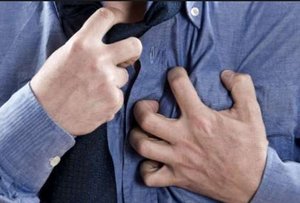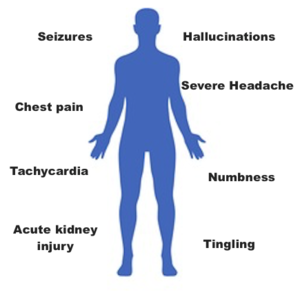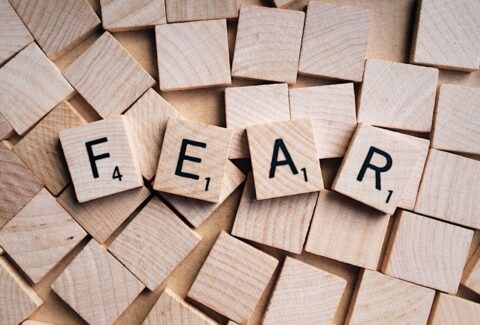Two Crucial Facts About K2
“He used K2, cocaine, and heroin. He says he takes his medications, but he keeps going in and out of the hospital. And the team does not know what to do,†lamented Maryann, the clinician on the HOPE ACT team, discussing the case with Rodis, the team consultant. Maryann was alluding to Raj, who often meets with her, but she wonders whether he really wants to get better.
The above clinical case introduces several articles in the series, New Strategies to Working with Individuals with Substance Use Disorder. In those previous articles, I explained the benefits that derive from mastering these new strategies. I then outlined key questions to ask and the steps to follow to integrate substance use treatment with mental health care. Then, I described two important facts all clinicians need to know about K2.Â
In this current article, I will describe two additional facts about K2 of great importance to clinicians.
They do not appear in regular urine toxicology tests
(but there are special tests for them)
I had the privilege to care for a patient, whom I will call John, who was admitted to an inpatient dual diagnosis unit, and he was both a challenge and a conundrum for the treatment team.
“The FBI is after me. The nurse in the ER tried to rape me, and I am going to press charges; and the doctor in the ER is an undercover FBI agent, and I was not going to provide any personal information to him.â€
an undercover FBI agent, and I was not going to provide any personal information to him.â€
These claims from John did not lessen in the least. In fact, while in the unit, John would not let certain staff care for him, because, “I recognize them. I just know them. I actually saw the nurse earlier, kissing another nurse. This is surreal,†he added. And surreal, indeed, it was.  Â
While John had what we called delusions, and maybe visual hallucinations, his thought process was far from disorganized. He was logical, well related, with great eye contact, full affect, and the underlying cause for his psychosis was not as obvious as it might have seemed. The result of a general workup was unimpressive, and ruling out physical health or neurological conditions and a substance-induced psychosis seemed to make sense, but urine toxicology was entirely negative.Â
 After several attempts to engage John, I eventually got “lucky.â€Â He told me, “You can be trusted. I recognize people and you seem to be a good guy.†This accolade earned me the verbal consent to speak with his brother, who was just happy that someone finally called. His brother said, “John had been that lovely man until he lost his job, and his wife left him; he lost his house and moved to a bad neighborhood and he started using K2 with friends. I had never known about this drug until he started using it. And the last time I saw him was about a week ago, when he told me he was taking the bus to go out of state with some of his friends, and that was it.†After my conversation with his brother, John quickly confessed, “He told you my secret, didn’t he? I smoke K2, I know. I was partying with my friends for three days straight.â€
After several attempts to engage John, I eventually got “lucky.â€Â He told me, “You can be trusted. I recognize people and you seem to be a good guy.†This accolade earned me the verbal consent to speak with his brother, who was just happy that someone finally called. His brother said, “John had been that lovely man until he lost his job, and his wife left him; he lost his house and moved to a bad neighborhood and he started using K2 with friends. I had never known about this drug until he started using it. And the last time I saw him was about a week ago, when he told me he was taking the bus to go out of state with some of his friends, and that was it.†After my conversation with his brother, John quickly confessed, “He told you my secret, didn’t he? I smoke K2, I know. I was partying with my friends for three days straight.â€
There are over a hundred different strainsÂ
K2 does not appear in regular urine tests. There are special tests to detect K2, but because they are over one  hundred different strains, a negative special urine toxicology does not necessarily mean an absence of K2. As I indicated in a previous article, K2 can lead to a variety of neuropsychiatric symptoms, including delusions, which can be rather bizarre, mimicking full-blown schizophrenia.Â
hundred different strains, a negative special urine toxicology does not necessarily mean an absence of K2. As I indicated in a previous article, K2 can lead to a variety of neuropsychiatric symptoms, including delusions, which can be rather bizarre, mimicking full-blown schizophrenia.Â
A comprehensive history of substance use for a full assessment, as I mentioned for mental health assessment, coupled with collateral information can lead us to the right path to correctly formulate and implement a multidimensional plan that addresses the root cause issues at hand.Â
K2 is not detected in regular urine toxicology, but there are special tests at our disposal. And we can also take advantage of the power of collateral information and our clinical skills, developed through New Strategies to Working with Individuals with Substance Use Disorder.
It therefore means, as I alluded to above, that our clinical skills, our ability to establish and maintain trust, and engage and form a strong therapeutic relationship will always remain the single most important element of the work we do.
In summary, new strategies for substance use assessment will help us master these needed skills, so we can continue to do the best work possible for our patients and clients, helping with relapse prevention, promoting full recovery, paying attention to integrated care, lessening fragmented care, and feeling gratified, as we continue to do this challenging though noble work.
LEARN MORE, PRACTICE DIFFERENTLY, AND FEEL CONFIDENT WORKING WITH CLIENTS BY JOINING US FOR A SEMINAR ON, “NEW STRATEGIES FOR SUBSTANCE USE ASSESSMENT,” ON FEBRUARY 20, 2019, 9:30AM – 4:30PM
References:
-
Fantegrossi, W. E.; Moran, J. H.; Radominska-Pandya, A; Prather, P. L. (2014). Distinct pharmacology and metabolism of K2 synthetic cannabinoids compared to Δ9-THC: Mechanism underlying greater toxicity. Life Sciences. 97 (1): 45–54.
-
Every-Palmer, S (September 1, 2011). Synthetic cannabinoid JWH-018 and psychosis: an explorative study. Drug and Alcohol Dependence. 117 (2–3): 152–7.
-
Sobolevsky, T.; Prasolov, I.; Rodchenkov, G. (2010). Detection of JWH-018 metabolites in smoking mixture post-administration urine. Forensic Science International. 200 (1–3): 141–147.
-
Spinelli, E; Barnes, AJ; Young, S; et al. (2015). Performance characteristics of an ELISA screening assay for urinary synthetic cannabinoids. Drug Test. Anal. 7 (6): 467–474.
-
Huppertz, LM; Kneisel, S; Auwärter, V; Kempf, J (2014). A comprehensive library-based, automated screening procedure for 46 synthetic cannabinoids in serum employing liquid chromatography-quadrupole ion trap mass spectrometry with high-temperature electrospray ionization. J. Mass Spectrom. 49 (2): 117–127.
-
Scheidweiler, KB; Jarvis, MJ; Huestis, MA (2015). Nontargeted SWATH acquisition for identifying 47 synthetic cannabinoid metabolites in human urine by liquid chromatography-high-resolution tandem mass spectrometry. Anal. Bioanal. Chem. 407 (3): 883–897.
-
Cannabinoid system: From the point of view of a chemist, in David Castle; Robin Murray, Marijuana and Madness: Psychiatry and Neurobiology, Cambridge University Press, pp. 1–18.









